Lopez C.P. - Linear Algebra with Mathematica
Here you can read online Lopez C.P. - Linear Algebra with Mathematica full text of the book (entire story) in english for free. Download pdf and epub, get meaning, cover and reviews about this ebook. genre: Science. Description of the work, (preface) as well as reviews are available. Best literature library LitArk.com created for fans of good reading and offers a wide selection of genres:
Romance novel
Science fiction
Adventure
Detective
Science
History
Home and family
Prose
Art
Politics
Computer
Non-fiction
Religion
Business
Children
Humor
Choose a favorite category and find really read worthwhile books. Enjoy immersion in the world of imagination, feel the emotions of the characters or learn something new for yourself, make an fascinating discovery.

Linear Algebra with Mathematica: summary, description and annotation
We offer to read an annotation, description, summary or preface (depends on what the author of the book "Linear Algebra with Mathematica" wrote himself). If you haven't found the necessary information about the book — write in the comments, we will try to find it.
The following topics are covered:
Variables And Functions
Variables
Functions Definition
Recursive Functions
Piecewise Functions
Operations With Functions
Data Types Used In The Definition Of The Functions
Numbers, Operations And Most Common Functions. Numbering Systems
Operations Arithmetic
Functions Predefined Of Integer Argument
Numbering Systems
Rational Numbers
Irrational Numbers
Complex Numbers. More Common Functions
Rounding And Approach Functions
Common Constant Used In Mathematica
Random Numbers
El Package Of Number Theory
Algebraic Expressions, Polynomials, And Interpolation
Functions Common Algebraic Operations
Polynomials
Operations Algebraic With Polynomials
Polynomial Interpolation
El Package Numericalmath Approximations
Polynomial Adjustment
Equations And Systems
Resolution Of Equations
Special Commands To Solve Equations
Numerical Methods For Resolution Of Equations
Systems Of Equations
Matrix Algebra
Vectors
Operations With Vectors
Matrices
Operations With Matrices
Special Operations With Matrices
Matrix Decomposition
Range Of A Matrix
Vector Spaces And Linear Applications. Linear Systems
Linear Independence. Bases. Change Of Basis
Linear Applications
Quadratic Forms
Systems Of Linear Equations
Rouche -Frobenius Theorem
Homogeneous Systems
Lopez C.P.: author's other books
Who wrote Linear Algebra with Mathematica? Find out the surname, the name of the author of the book and a list of all author's works by series.

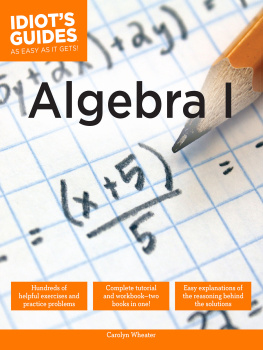
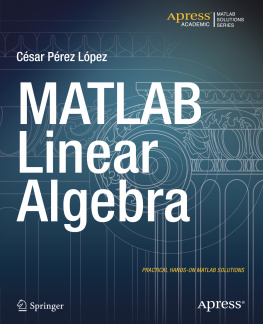
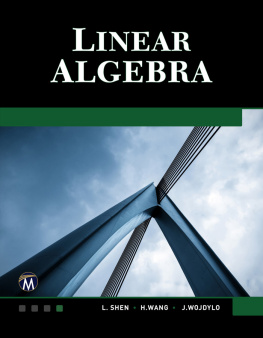
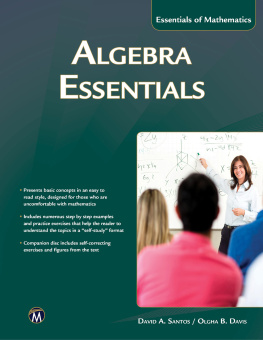
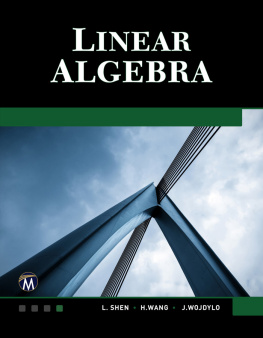


 Figure 2.1 Whenit is necessary to control the function, rather than across a single condition,but of several, is available the operator condicuional Wich with thefollowing syntax: Which[condition1, expression1,..., conditionn, expressionn] Ifthe conditioni is true the expressioni is evaluated (i=1, 2, ,n).Putting True as the last condition, gets evaluate the last expression if noneof the previous conditions have been certain. Asan example we consider the piecewise-defined function look: In[15]:=g[x_]:=Which[-2<=x<=2,x^2, -3<=-3, 0, 2<=x, 0, True,x^2] Thefunction g to pieces at intervals is defined (- , - 3) (- 3, - 2), (- 2.2), (2.3), (3, ). Wecan graphically represent the function g as follows: In[16]: = Plot [g [x], {x, - 4, 4}]Out[16] = see Figure 2.2
Figure 2.1 Whenit is necessary to control the function, rather than across a single condition,but of several, is available the operator condicuional Wich with thefollowing syntax: Which[condition1, expression1,..., conditionn, expressionn] Ifthe conditioni is true the expressioni is evaluated (i=1, 2, ,n).Putting True as the last condition, gets evaluate the last expression if noneof the previous conditions have been certain. Asan example we consider the piecewise-defined function look: In[15]:=g[x_]:=Which[-2<=x<=2,x^2, -3<=-3, 0, 2<=x, 0, True,x^2] Thefunction g to pieces at intervals is defined (- , - 3) (- 3, - 2), (- 2.2), (2.3), (3, ). Wecan graphically represent the function g as follows: In[16]: = Plot [g [x], {x, - 4, 4}]Out[16] = see Figure 2.2 Figure 2.2 Alsowe can graphically represent the function for the function g as follows: In[16]:=Plot[g'[x], {x, -4, 4}] Wewill now define a function, called rect, which is set to 1 in the interval[-1/3, 1/3] and which is worth $ 0 in the rest of the real line. In[23]:=rect[x_] := 1 /. (-1/3 <= x && x <= 1/3)In[24]:=rect[x_] := 0 /. (-1/3 <= x && x <= 1/3)In[24]:=rect[x_] := 0 /.
Figure 2.2 Alsowe can graphically represent the function for the function g as follows: In[16]:=Plot[g'[x], {x, -4, 4}] Wewill now define a function, called rect, which is set to 1 in the interval[-1/3, 1/3] and which is worth $ 0 in the rest of the real line. In[23]:=rect[x_] := 1 /. (-1/3 <= x && x <= 1/3)In[24]:=rect[x_] := 0 /. (-1/3 <= x && x <= 1/3)In[24]:=rect[x_] := 0 /.